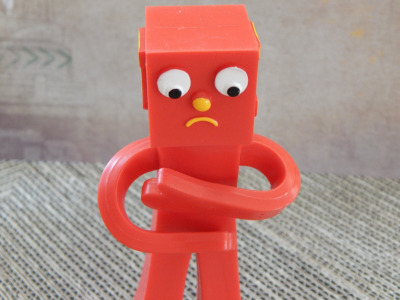Speed puzzling posture is a real thing. If you’re back is hurting, your feet throbbing or you have a pain in your neck, it’s hurting your puzzle play. Plus, stationary for a period of time can hurt later on as our human bodies are fragile.
What is Your Best Speed Puzzling Posture?

When I share with my puzzler pals that I worry about my speed puzzling posture, I know they think I am a little weird, but it’s true. Years ago I had a puzzle competition where I was flying through the pieces. And then I got a sharp pain in my side. It turned out to be something not so serious, but in the moment I lost my puzzle concentration and it ruined my chances of moving up. So it’s really important to me (and other puzzlers to consider what the speed puzzling posture is during a live competition event.
The best posture for speed puzzling can vary from person to person, and individual preferences may play a significant role. Plus, this is a decision you can only make. However, here are considerations for standing, sitting, and leaning postures to help you determine what might work best for you:
Table of Contents
Standing
Pros: Standing provides better mobility and allows you to move around the puzzle easily. It can be more comfortable for those who prefer an active and dynamic approach. Standing also reduces the risk of stiffness during longer sessions.
Cons: Fatigue may set in if standing for an extended period. It might not be suitable for everyone, especially those with back or leg issues.
Sitting
Pros: Sitting allows for a stable and grounded position, promoting focus. It can be more comfortable for longer sessions, and a chair with good back support can provide ergonomic benefits. This posture is generally accessible to most people.
Cons: Limited mobility compared to standing. It may lead to stiffness if not coupled with occasional movement.
Leaning
Pros: Leaning over the puzzle provides a close-up view, aiding in detailed piece examination. It combines some benefits of standing and sitting, offering a balance between mobility and stability.
Cons: Prolonged leaning may strain the neck and back. It requires a suitable surface or puzzle table height to avoid discomfort.
Considerations for Your Speed Puzzling Posture
After you think about the way you play puzzles, consider your posture compared to elements that make the most of the situation. Sometimes I find myself sitting if it’s a long table. Or if it’s shorter, standing. The environment of the speed puzzling competition makes a huge difference!
Don’t forget to consider these elements when it comes to your speed puzzling posture:
Comfort
Choose a posture that feels comfortable for you, considering your body’s natural alignment and any potential discomfort during extended sessions.
Mobility
Balance mobility with stability. You want to move efficiently but also maintain a stable position for precise piece placement.
Experiment
Try different postures during practice sessions to see which one enhances your speed and accuracy.
Environment
The height and layout of your puzzle table or surface can influence the most suitable posture. Ensure your setup supports your chosen posture.
Change Your Posture to be Comfortable
Ultimately, the best speed puzzling posture is one that allows you to maintain focus, move efficiently, and avoid discomfort or fatigue. It may be beneficial to switch postures periodically during a session to prevent stiffness and optimize your performance. You need to make sure you are comfortable during your play. Add your speed puzzling tips to make your best game ever.
There is nothing wrong with changing your movement, trying new positions and making the best of your space. Just make sure however you move, your ultimate goal is to avoid being distracted from the task at hand: Playing the jigsaw puzzle fast!
